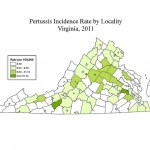Vaccine Exemptions
In more encouraging public health news, the Centers for Disease Control and Prevention reports that vaccination rates among kindergarteners have remained stable, with the median vaccine exemption rate at 2 percent. Some states even reported an increase in immunization rates.
In a study published last week in CDC’s Morbidity and Mortality Weekly Report, researchers examined 2016-2017 data from 49 states regarding coverage of three vaccines: measles, mumps and rubella (MMR); diphtheria, tetanus and acellular pertussis (DTaP); and varicella, more commonly known as chickenpox. Researchers also…
Another day, another study that underscores the societal benefits of vaccines and the consequences we’d face without them.
In a study published earlier this week in JAMA Pediatrics, researchers took on the issue of vaccine hesitancy by estimating the disease burden and economic costs associated with declines in the measles-mumps-rubella (MMR) vaccination rate. They noted that while overall childhood vaccine rates remain high in the U.S., there are areas where nonmedical exemption policies are materializing into declining immunization coverage.
For example, this 2016 article in PLOS Medicine…
A new review of the scientific literature confirms the truth about vaccine exemptions; they endanger everyone. On The Pump Handle, Kim Krisberg outlines the horrible realities of vaccine-preventable disease, and writes that vaccine refusal has "accelerated the resurgence of whooping cough and measles here in the U.S." On Respectful Insolence, Orac writes "the MMR [vaccine] is very effective against measles, over 90%, but not 100%." Meanwhile, with whooping cough, vaccine-induced immunity wears down over time.
These windows of opportunity for infection would be inconsequential in a fully…
